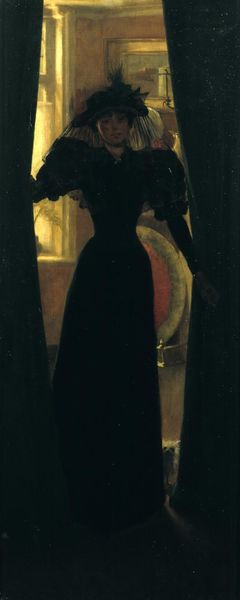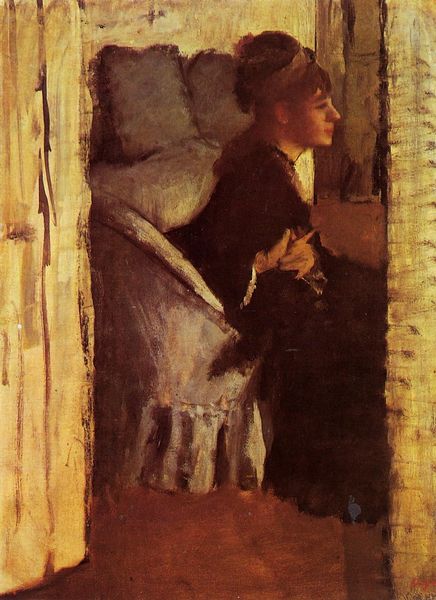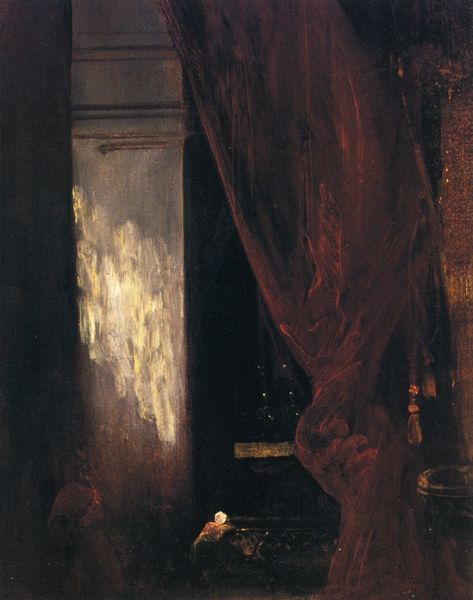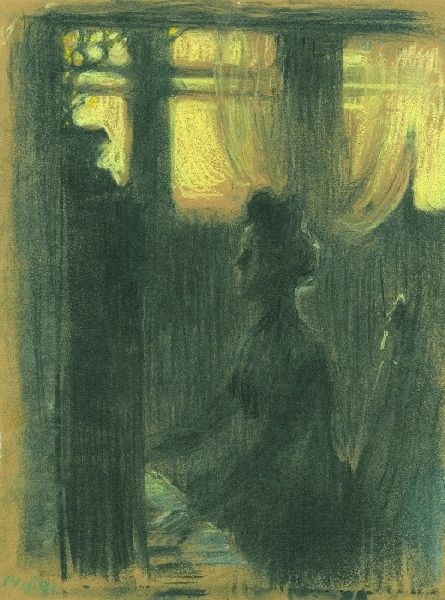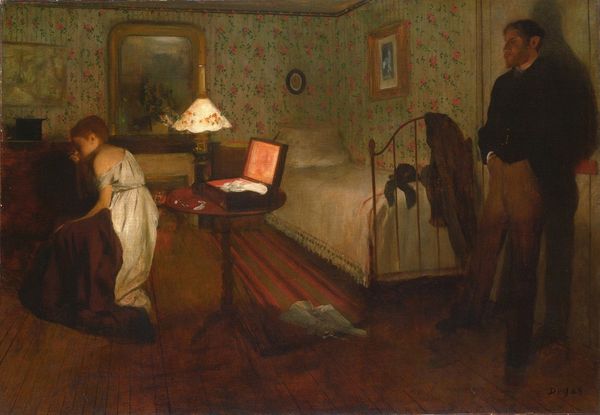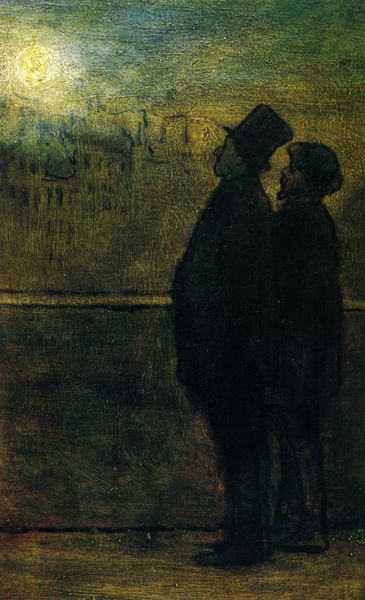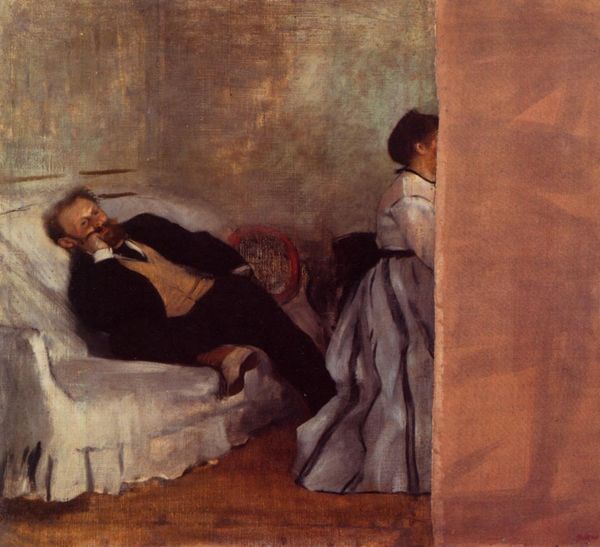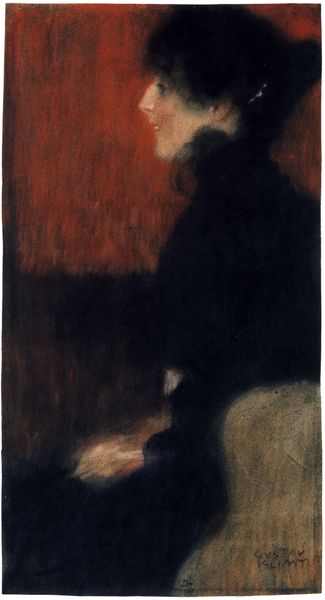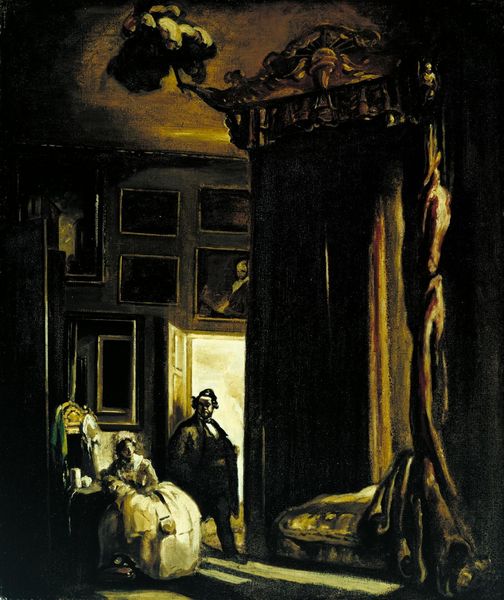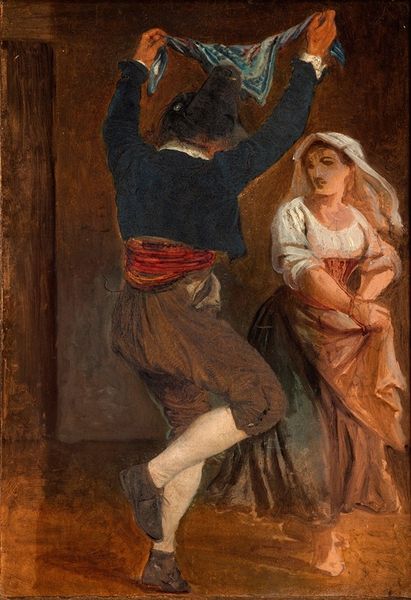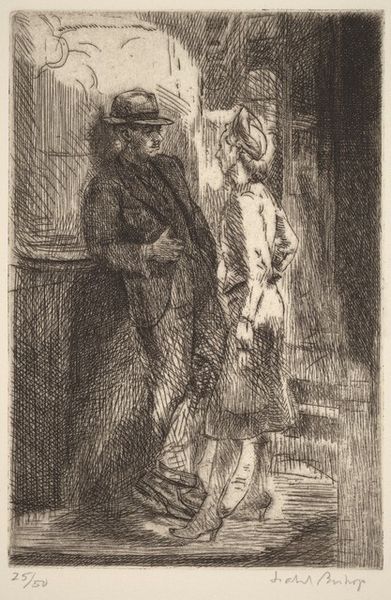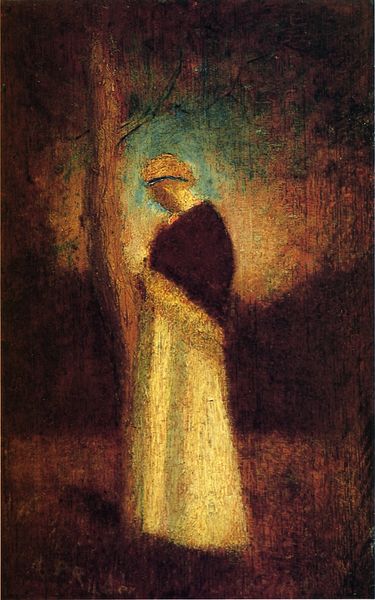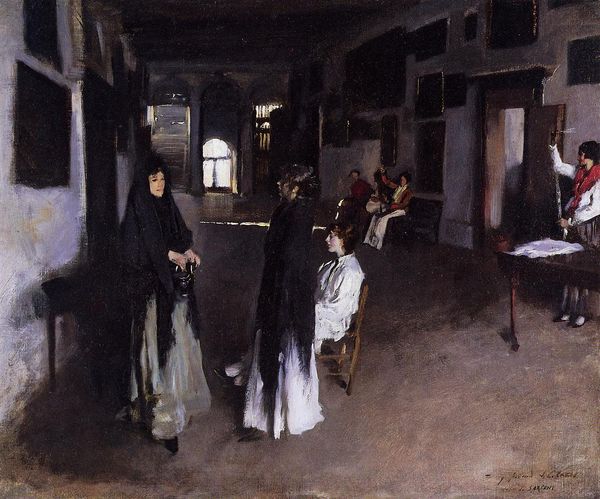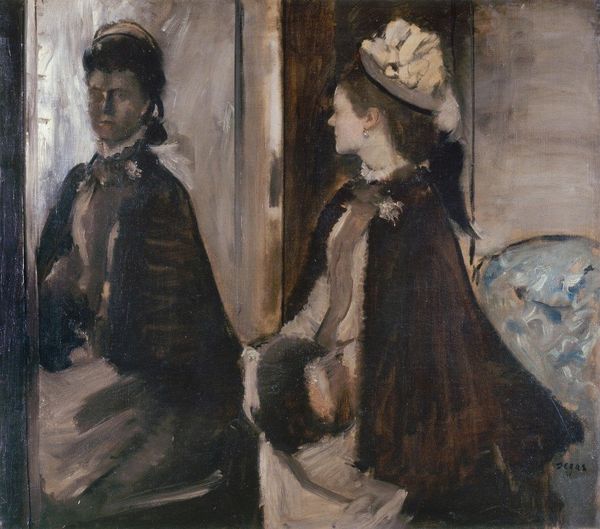
Dimensions: support: 889 x 610 mm frame: 1092 x 819 x 74 mm
Copyright: © The estate of Sir William Rothenstein. All Rights Reserved 2010 / Bridgeman Art Library | CC-BY-NC-ND 4.0 DEED, Photo: Tate
Curator: Rothenstein's painting, "The Doll's House", presents a rather dimly lit scene. My immediate impression is of a stage set, a moment fraught with unspoken tension. Editor: Definitely, the obscurity heightens the sense of unease. The woman, partially obscured by the staircase, seems to represent vulnerability, perhaps entrapment. Curator: The staircase itself functions as a barrier, a symbolic divide. Notice how Rothenstein uses light to emphasize the woman, yet her expression remains obscured, deepening the enigma. Editor: Absolutely, and consider the male figure lurking in shadow. He signifies power, control. The ambiguity of their relationship underscores broader societal oppressions. Curator: There is a definite interplay of innocence and experience here. The doll-like quality of the woman, juxtaposed with the man's commanding presence, evokes centuries of symbolic representation. Editor: Right. This painting is more than a domestic scene; it's a commentary on gender and social confinement. It prompts a deeper inquiry into the power dynamics. Curator: Indeed. The work's visual language invites us to consider our own biases, doesn’t it? Editor: Precisely. It's a stark reminder of the insidious ways oppression manifests.
Comments
tate 7 months ago
⋮
http://www.tate.org.uk/art/artworks/rothenstein-the-dolls-house-n03189
Join the conversation
Join millions of artists and users on Artera today and experience the ultimate creative platform.
tate 7 months ago
⋮
The title of this painting refers to Henrik Ibsen’s 1879 play, The Doll’s House. It tells the story of a disintegrating marriage. Ibsen’s realistic prose influenced many painters. Here, Rothenstein is inspired by a tense scene where a character’s infidelity is uncovered. The artist doesn’t illustrate the play. Instead, the painting finds an equivalent for Ibsen’s use of silence and stillness to create dramatic tension. Rothenstein used his wife, actor Alice Kingsley and his friend, artist Augustus John as the models. Gallery label, October 2020
